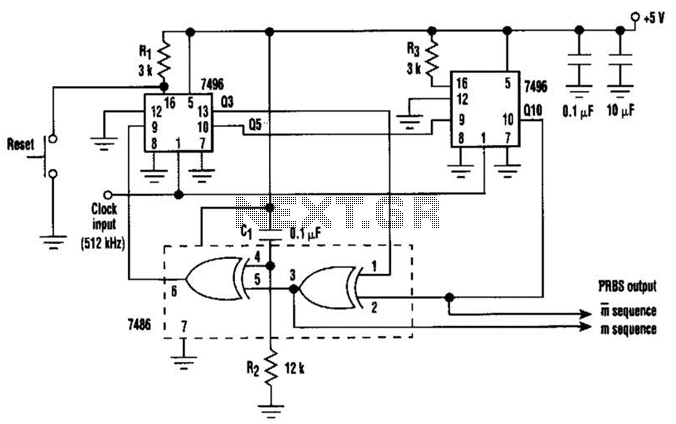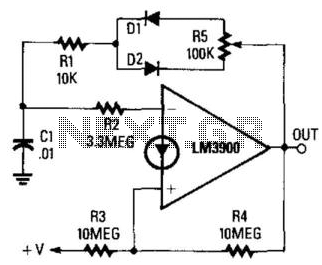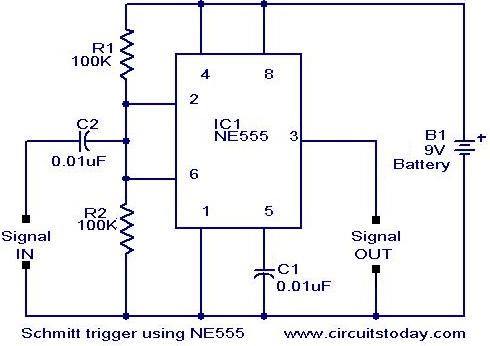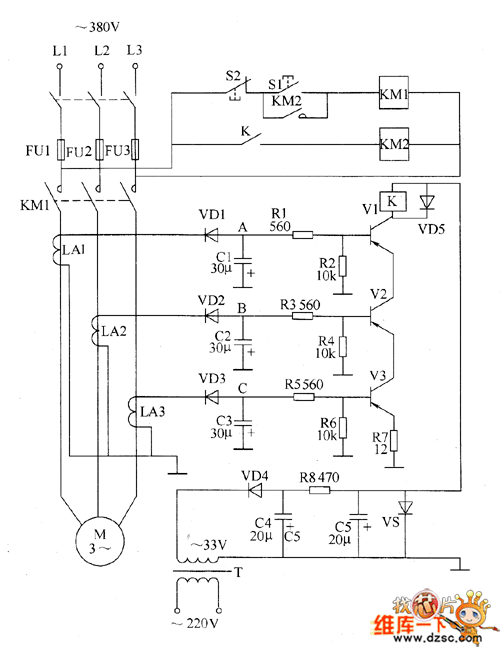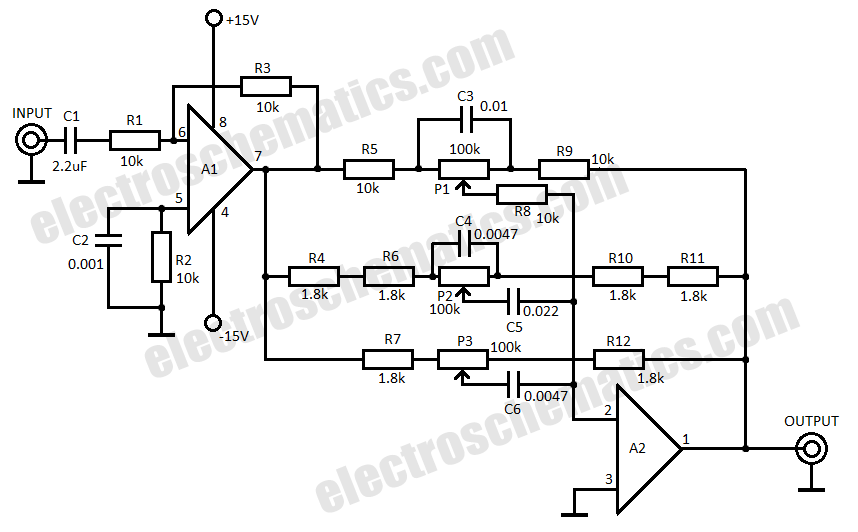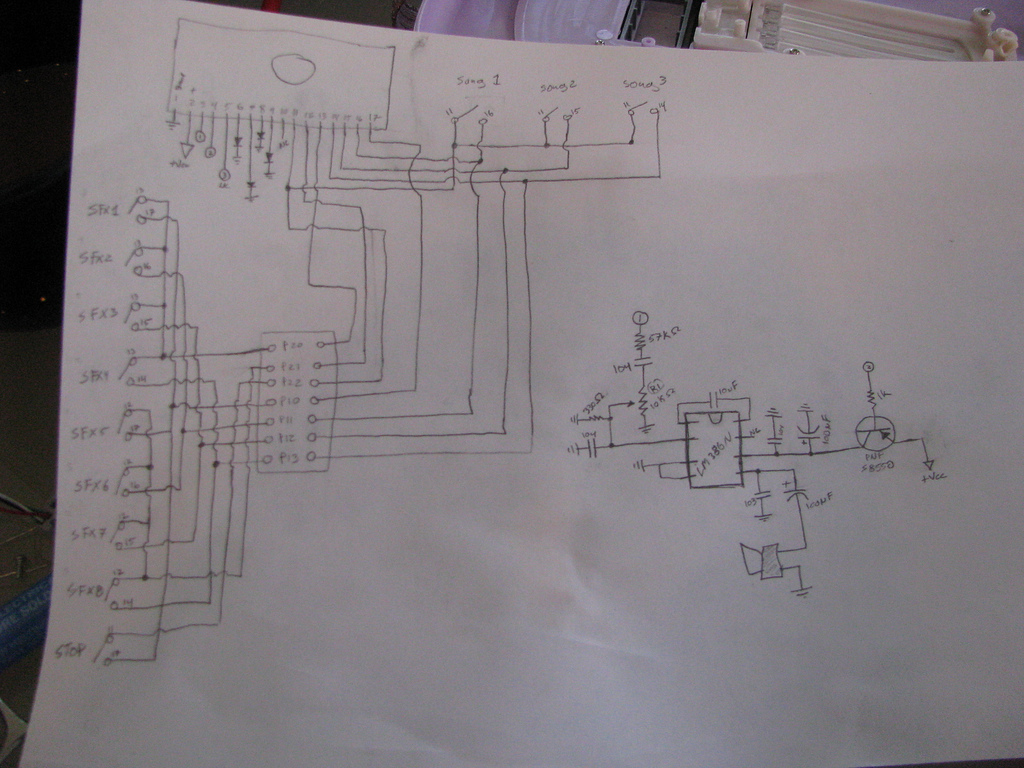
1024kHz and 4kHz square-wave output circuit
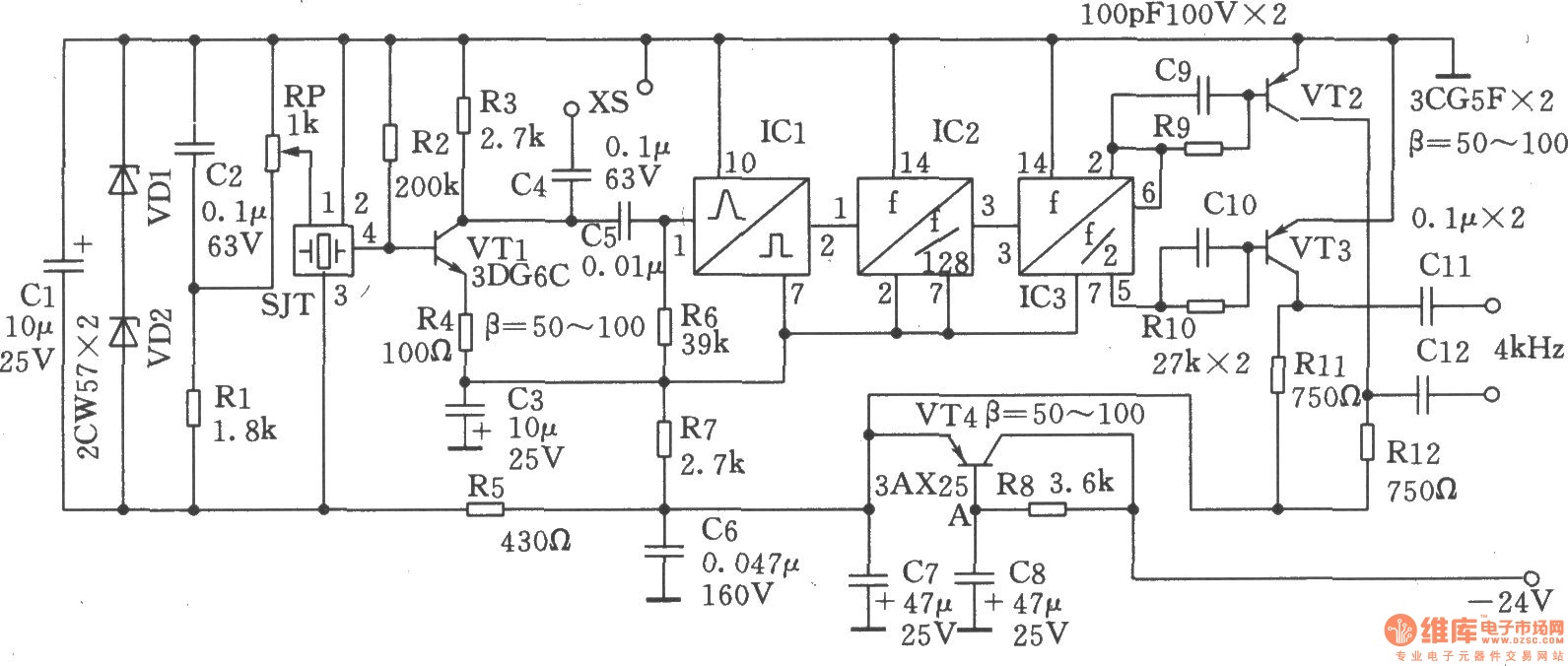
The circuit SJT is a 1024 kHz warming crystal oscillator. The circuit is illustrated in the accompanying chart. Due to the low output signal level, a transistor (VT1) is employed as a buffer amplifier. The base bias resistor (R2) of VT1, along with the load resistor (R3) and the emitter resistor (R4), creates a negative feedback loop that stabilizes the DC operating point of VT1.
The SJT circuit operates at a frequency of 1024 kHz, utilizing a crystal oscillator to generate a stable and precise frequency output. The crystal oscillator is a key component in this design, as it provides the necessary frequency stability through its inherent resonant properties. The output from the oscillator is typically low in amplitude, which necessitates the inclusion of a buffering stage to ensure that the signal can be effectively utilized in subsequent stages of the circuit.
The transistor VT1 serves as a buffer amplifier, which isolates the oscillator from the load while providing amplification to the output signal. The base bias resistor R2 is crucial for establishing the correct biasing conditions for the transistor, ensuring that it operates in the active region. This resistor is selected based on the desired base current, which in turn determines the collector current and, consequently, the output signal level.
Resistor R3 acts as the load resistor for the output of the buffer amplifier. It is essential for defining the output impedance of the circuit, allowing the signal to drive subsequent stages or loads without significant distortion or loss of amplitude. The choice of R3 value is determined by the characteristics of the load and the required output voltage swing.
The emitter resistor R4 plays a vital role in providing negative feedback to the circuit. By introducing a portion of the output signal back to the emitter, R4 stabilizes the operating point of the transistor, reducing the effects of temperature variations and component tolerances. This feedback mechanism ensures that the transistor maintains a consistent performance over varying conditions, contributing to the overall reliability of the oscillator circuit.
In summary, the SJT circuit effectively combines a crystal oscillator with a buffer amplifier to generate a stable 1024 kHz output signal. The careful selection of resistors R2, R3, and R4 is critical to achieving the desired performance characteristics, ensuring that the circuit operates efficiently and reliably for its intended application.The circuit SJT is a 1024kHz warming crystal oscillator. Circuit is shown as the chart. As its output signal level is low, so the following transistor VTl is used as the buffer amplifier. The base bias resistor R2 of VTl, the load resistor R3, the emitter resistor R4 form the negative feedback resistor which is used to stabilize the DC operating point of VTl.. 🔗 External reference
The SJT circuit operates at a frequency of 1024 kHz, utilizing a crystal oscillator to generate a stable and precise frequency output. The crystal oscillator is a key component in this design, as it provides the necessary frequency stability through its inherent resonant properties. The output from the oscillator is typically low in amplitude, which necessitates the inclusion of a buffering stage to ensure that the signal can be effectively utilized in subsequent stages of the circuit.
The transistor VT1 serves as a buffer amplifier, which isolates the oscillator from the load while providing amplification to the output signal. The base bias resistor R2 is crucial for establishing the correct biasing conditions for the transistor, ensuring that it operates in the active region. This resistor is selected based on the desired base current, which in turn determines the collector current and, consequently, the output signal level.
Resistor R3 acts as the load resistor for the output of the buffer amplifier. It is essential for defining the output impedance of the circuit, allowing the signal to drive subsequent stages or loads without significant distortion or loss of amplitude. The choice of R3 value is determined by the characteristics of the load and the required output voltage swing.
The emitter resistor R4 plays a vital role in providing negative feedback to the circuit. By introducing a portion of the output signal back to the emitter, R4 stabilizes the operating point of the transistor, reducing the effects of temperature variations and component tolerances. This feedback mechanism ensures that the transistor maintains a consistent performance over varying conditions, contributing to the overall reliability of the oscillator circuit.
In summary, the SJT circuit effectively combines a crystal oscillator with a buffer amplifier to generate a stable 1024 kHz output signal. The careful selection of resistors R2, R3, and R4 is critical to achieving the desired performance characteristics, ensuring that the circuit operates efficiently and reliably for its intended application.The circuit SJT is a 1024kHz warming crystal oscillator. Circuit is shown as the chart. As its output signal level is low, so the following transistor VTl is used as the buffer amplifier. The base bias resistor R2 of VTl, the load resistor R3, the emitter resistor R4 form the negative feedback resistor which is used to stabilize the DC operating point of VTl.. 🔗 External reference
